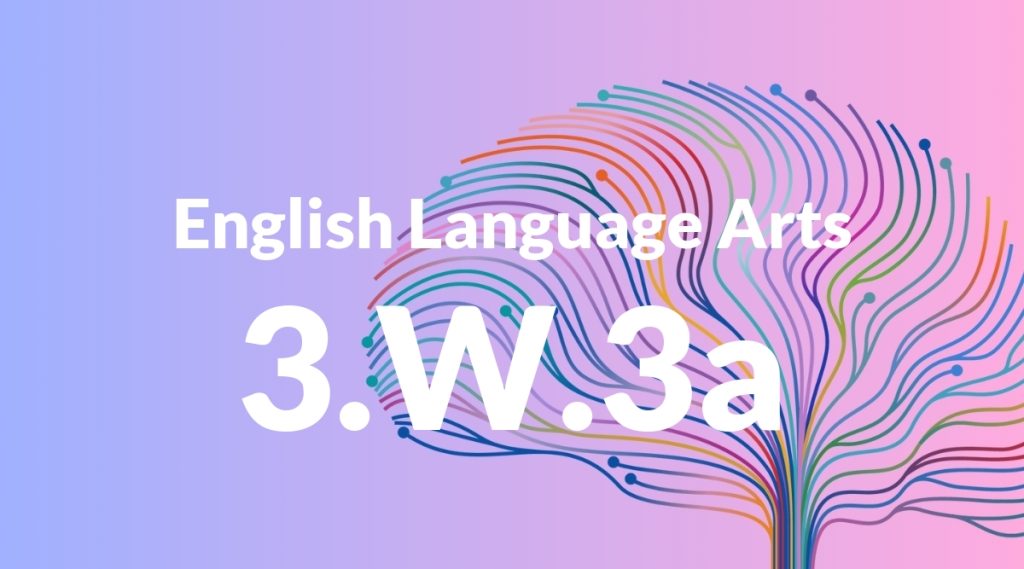Standard: 3.W.3a – Establish a situation and introduce a narrator and/or characters; organize an event sequence that unfolds naturally.
Grade level: Grade 3
Subject: English Language Arts
Domain: Writing
Teacher Overview
This standard focuses on helping students craft narratives by establishing a situation, introducing characters, and organizing events in a natural sequence. It’s a foundational skill in storytelling that enhances students’ ability to communicate effectively. Students should be able to construct basic sentences and paragraphs, and have a fundamental understanding of story elements like setting, characters, and plot.
Students will progress to writing more complex narratives with multiple events, deeper character development, and the use of dialogue to enhance storytelling.
Common Misconception 1
Students may think that a story can be a random collection of events without a clear sequence. This is incorrect because a coherent sequence of events is crucial for the reader to follow and understand the story.
Intervention 1
Use graphic organizers to help students plan their stories in a logical sequence, ensuring each event leads naturally to the next.
Common Misconception 2
Students might believe that all stories must have a lot of characters to be interesting. This is incorrect as too many characters can confuse the reader and dilute the story’s focus.
Intervention 2
Provide examples of stories with one or two well-developed characters to show that fewer characters can be just as engaging and easier to follow.
Prerequisite Knowledge
Students should have a basic understanding of sentence structure, the ability to write simple paragraphs, and familiarity with basic story elements such as setting, characters, and plot.
Subsequent Knowledge
After mastering this standard, students will be able to write more complex narratives with multiple events, develop characters in greater depth, and use dialogue to enhance their stories.
Instructional Activities
- Use story maps to outline narratives before writing.
- Practice writing short stories with a clear beginning, middle, and end.
- Read and analyze simple narratives to identify their structure.
- Role-play characters and events to understand their sequence.
- Create storyboards to visualize the sequence of events.




